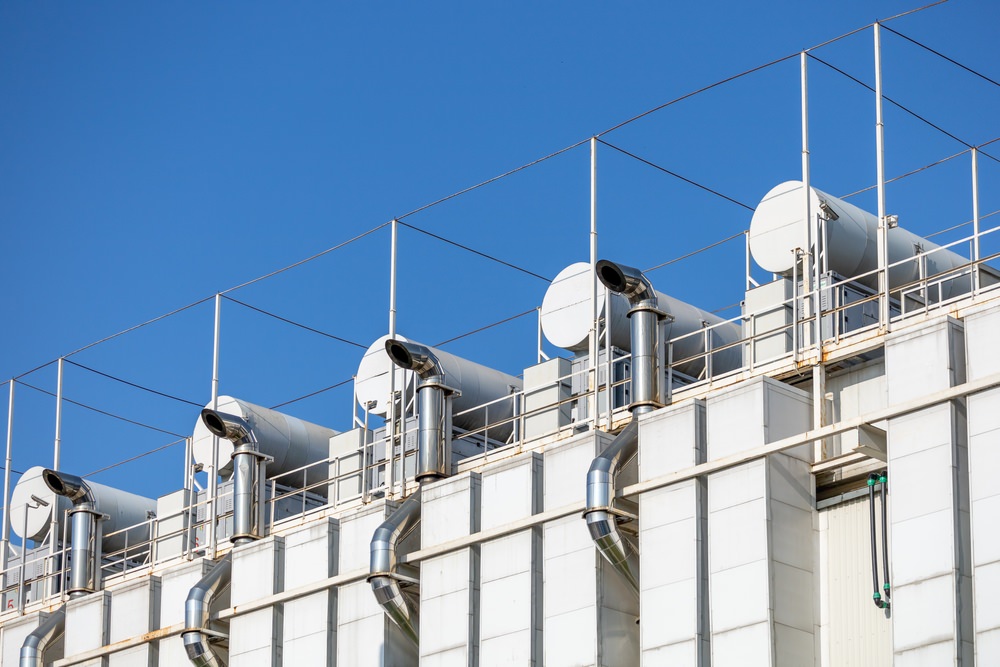Cooling the Cloud
News
Posted by: IonicBlue
5 months ago
Supporting everything from large AI models and streaming services to critical financial transactions, data centers power our digital world. But as the industry booms, so does its energy footprint.
A data center’s constant operation – and its energy-intensive cooling systems – present challenges for companies focused on energy cost reduction, sustainability, and resilience. Avoiding capital expenditures, in particular, is key for many facilities looking to implement cutting-edge cooling and infrastructure solutions, which can include:
- Immersion chillers
- Liquid cooling systems
- Direct-to-chip cooling
- Microgrid solutions
- Demand management
- Humidity control systems
In this article, we’ll examine how Energy-as-a-Service (EaaS) can revolutionize how your facilities address data center cooling issues. We’ll focus on reliable outsourced solutions for energy infrastructure that mitigate financial risks, optimize operations, and drive data center energy savings.
Let’s start with risk transfer and the expansive financial benefits of partnering with an energy infrastructure partner for advanced thermal management.
EaaS: A Financially Flexible Approach
EaaS transforms the way data centers handle energy infrastructure. Instead of bearing the capital expense of building or upgrading facilities, businesses outsource energy management, maintenance, and upfront costs.
Financial Benefits
- Risk Mitigation: By transferring the operational and financial risks of energy infrastructure to an EaaS partner, data centers can focus on their core operations.
- Quicker Scaleability: EaaS enables rapid expansion and deployment of energy infrastructure, supporting data centers to scale their operations or build new facilities faster. This agility helps maximize revenue potential by bringing additional capacity online sooner and aligning energy solutions with growth opportunities.
- Off-Balance-Sheet Solutions: Energy infrastructure finance structures keep energy assets off the company’s balance sheet, improving financial flexibility and enabling reinvestment in other priorities.
- Third-Party Capital and Tax Monetization: A range of options – including public-private funding programs, credit enhancements, and tax credit transfers – open up when businesses utilize third-party capital to finance energy infrastructure.
- Predictable Costs: Data centers pay a fixed monthly fee for energy services, avoiding unpredictable expenses, benefiting from expert management, and eliminating deferred maintenance.
An EaaS and finance partner ensures high-density data center owners can implement specialized equipment while avoiding the capital outlay typically required for infrastructure like large-scale liquid cooling systems. These long-term energy management and asset agreements also offer data centers a reliable future, as AEI notes: “Liquid cooling does have challenges and costs. … Maintenance is more complex as well, necessitating specific expertise to manage the liquid systems and prevent leaks or other issues that could jeopardize data center operations.”

What Are the Energy Solutions for Data Centers?
Heat management and chiller system solutions allow owners to tackle their biggest challenge: data center energy consumption.
Data center cooling, according to research cited by the U.S. Department of Energy’s ARPA, “may account for up to 33 to 40% of overall data center energy usage and consumes hundreds of billions of gallons of fresh water per year.”
Efficient data center energy management involves more than just cooling server racks. Techniques such as hot aisle/cold aisle containment and airflow optimization minimize the mixing of hot and cold air, improving overall cooling efficiency.
But air cooling is no longer enough – especially for high-density setups. This has led data center owners to increasingly look for liquid cooling system solutions, chillers, and other means to transfer heat away from server infrastructure, reduce energy waste, and improve reliability.
Chiller systems play a critical role in maintaining optimal temperatures and – with expert design and management – can optimize data center energy consumption.
How EaaS Optimizes Chiller Operations
- Dynamic Energy Adjustments: EaaS providers use real-time monitoring to optimize chiller performance. This minimizes power usage while ensuring reliable cooling, helping data centers reduce both operational costs and carbon footprint.
- Peak Demand Management: During high-demand periods, facilities can shift energy-intensive cooling tasks to off-peak times or alternative energy sources, resulting in significant cost savings.
- Predictive Maintenance: Advanced AI-driven analytics anticipate maintenance needs, reducing downtime and extending equipment lifespan. This also prevents the energy spikes associated with unexpected failures.
Peak Demand Management: Lowering Costs and Carbon
EaaS strategies ensure data centers operate efficiently even during peak usage hours. This approach powers cost control and helps meet performance and sustainability goals by:
- Shifting energy-intensive tasks to off-peak periods
- Maximizing uptime and performance
- Leveraging alternative energy sources like battery storage or renewables
- Participating in demand-response programs to optimize grid stability and earn incentives
Microgrid Solutions: Resilience Meets Sustainability
Microgrid benefits extend beyond uninterrupted operations. Key advantages include:
- Enhanced Resilience: By incorporating battery storage, renewable energy sources, and backup generators, microgrids ensure continuous operation during grid outages or natural disasters.
- Energy Cost Optimization: Microgrids allow data centers to manage energy costs through strategies like demand response and energy arbitrage, further reducing expenses.
- Decarbonization: On- or off-site renewable energy sources, such as solar and wind power, integrated with battery storage, help data centers reach corporate sustainability targets.
A New Era in Data Center Energy Management
The energy challenges of data centers demand innovative solutions. With EaaS, businesses gain access to cutting-edge technology, optimized energy use, and financial flexibility, all managed by experts. Whether it’s integrating renewable energy, reducing peak demand costs, or leveraging predictive analytics for chillers, EaaS empowers data centers to operate efficiently and sustainably.
IonicBlue’s Energy-as-a-Service model goes beyond energy savings, through tailored solutions that:
- Provide expertise in design and system optimization.
- Offer advanced financing options for upgrades and retrofits with off-balance-sheet mechanisms.
- Integrate innovative technologies to enhance operational efficiency.
By partnering with IonicBlue, data centers can address rising energy demands, meet sustainability goals, and mitigate financial and operational risks — while staying ahead in a rapidly evolving industry.
To learn how IonicBlue can transform your energy strategy, contact us today. Let’s build smarter, greener, and more resilient data centers together.
Categories:
You May Be Interested In:

Energy Infrastructure as a Service
6 months ago by IonicBlue

Combining Third-Party Capital and EaaS to Power and Fund Energy Infrastructure
7 months ago by IonicBlue

How to Slash Your Energy Costs: A Guide for Energy-Intensive Industries
7 months ago by IonicBlue

IonicBlue® and CIB Partner to Promote Decarbonization
2 years ago by IonicBlue